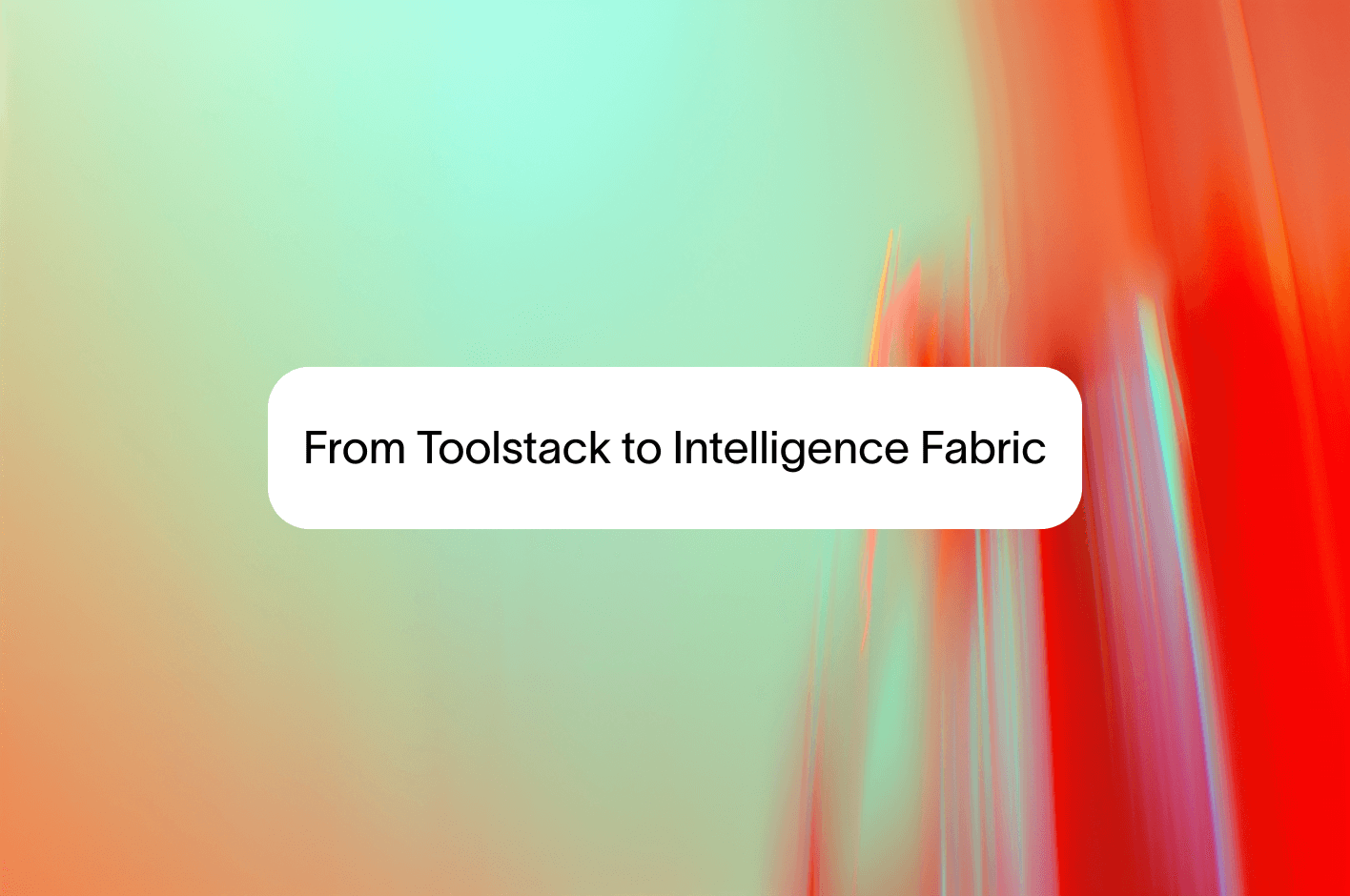Millions of calls distilled
into answers
Every Moment. One Intelligent Platform.
Know what's happening across every interaction. Spot patterns, act faster, and lead with confidence.






"Hear has been a transformative partner for Shift, revolutionizing the way we manage customer interactions. What used to be a manual, time-consuming effort is now automated, accurate, and insight-driven. With Hear, we’ve gained both operational efficiency and deeper call compliance and quality from our representatives."
– Yuval Danin, CEO at Shift
Your Data.
Our Priority.
Your data stays private, your trust protected. We follow strict security standards and keep our processes transparent. Non-negotiable for the teams who can’t afford compromises; and neither can we.
Our AI
Accuracy is our foundation. Our dual-model framework verifies every output before it reaches you, so you can make decisions with confidence.
Built for Smarter Contact Centers
Clarity built in. Keep your contact center running sharp.
Hear is truly amazing. The insights it provides go far beyond what I could have imagined before we started using it.



Hear has been a transformative partner for Shift, revolutionizing how we manage customer interactions. What was once a manual, time-consuming process is now automated, accurate, and insight-driven.



What we love most about Hear is how easy it is to use. Everything we need is right there. We can instantly see what customers are calling about, how our team is performing, and where we can improve.

.png)

Call Resolution
Completion trends, uncovered. See how every call wraps, and what that means for your team’s next move.
Call Issue Analysis
What’s getting in the way? Discover the top call blockers, so your team can fix what matters faster.
Compliance Tracking
Surfaces missed details in real time, helping teams close gaps, stay compliant, and avoid the backtracking that slows everyone down.
Call Resolution
Completion trends, uncovered. See how every call wraps, and what that means for your team’s next move.
Call Issue Analysis
What’s getting in the way? Discover the top call blockers, so your team can fix what matters faster.
Compliance Tracking
Surfaces missed details in real time, helping teams close gaps, stay compliant, and avoid the backtracking that slows everyone down.
Turn Conversation


Into Your
.svg)
Next Big Breakthrough
Connect with Hear’s experts and start turning insights into impact
Book a DemoCase studies
Stay updated
Make the most of AI- driven innovation for contact centers.

Rethinking AI Adoption in the Contact Center: From One Off Tools to Full System Intelligence
In the current wave of enterprise AI adoption, contact centers have become a primary testing ground. It’s where automation meets urgency, where customer sentiment meets real time execution. Yet most organizations approach AI as if they’re picking tools off a shelf adding one bot here, a sentiment tracker there, an agent assist tool in the middle. This approach offers quick wins, but yields limited transformation. The real potential of AI in the contact center does not lie in incremental tools. It lies in rethinking the system entirely.
To illustrate the point, consider a simple analogy: personal AI adoption.
The Image Generator vs. the AI Operating System
Imagine you discover a cutting edge AI image generator. It’s powerful, intuitive, and drastically reduces the time it takes to produce visual content. For marketing or design work, it’s a game changer. But it touches only one part of your daily workflow.
Now imagine adopting a multimodal tool like ChatGPT. It’s not confined to one domain; it assists with writing, summarizing, brainstorming, learning, decision making, coding, image generation, and more. Its value doesn’t lie in outperforming a single tool, but in improving everything you do. It doesn’t replace one skill; it elevates your entire baseline of capability.
This is the difference between AI as a tool and AI as a system of intelligence.
The same choice confronts contact center leaders today.
Incremental AI: The Comfortable Path to Minimal Disruption
The enterprise appetite for AI is growing, but the instinct to contain it is strong. It’s easier to frame AI as a bolt-on chatbot for FAQs, an agent assist plug-in for real time scripting, or a predictive routing module for better queue management. These point solutions offer local efficiency, but they rarely shift the organization’s intelligence frontier.
Why? Because their impact is compartmentalized. They streamline functions, not systems. A bot that reduces call volume by 10% is valuable, but if the underlying training, analytics, quality assurance, and managerial workflows remain unchanged, the operation continues to behave like a legacy system.
Incremental AI tools often create more fragmentation, not less. They produce disconnected data silos, demand additional human oversight, and rarely integrate seamlessly into existing strategic workflows. The ROI is real, but shallow.
Foundational AI: Building Intelligence into the Operating System
By contrast, foundational AI doesn’t aim to optimize a part; it aims to rewire the whole. It views the contact center not as a set of functions to automate, but as an interconnected network of people, conversations, workflows, and decisions, all of which are candidates for intelligence augmentation.
This approach allows AI to touch every layer of the contact center:
- Training & Onboarding: AI dynamically adapts learning content to each agent’s performance profile.
- Live Operations: Real time copilot tools adjust based on context, customer sentiment, and escalation thresholds.
- Routing & Workflows: Conversations are dynamically routed to human or AI agents based on complexity and skill match.
- Post Call Insights: AI performs 100% QA scoring, extracts trends, summarizes calls, and feeds back to both product and CX.
- Managerial Reporting: Data becomes queryable in natural language, and insight replaces intuition.
Here, AI is not a feature. It is the organizing principle of the contact center.
Strategic Costs of a Piecemeal Approach
The hidden downside of incremental AI adoption is the operational tax it imposes. When AI tools are introduced in isolation:
- Integration debt accumulates. Each new tool demands its own data pipeline, governance layer, and training protocol.
- Context is lost between systems. A bot may know what the customer asked, but the agent may not know how the bot responded.
- Managerial complexity rises, not falls. Human supervisors end up managing not just agents, but the misalignment between fragmented tools.
Perhaps most critically, this approach reinforces the old paradigm: humans are the glue that holds the system together. In a truly intelligent contact center, that role is played by AI itself, managing AI, monitoring human performance, and continuously optimizing the orchestration of both.
From Toolstack to Intelligence Fabric
What’s needed is a shift from assembling a toolstack to constructing an intelligence fabric, a layer of AI that permeates the entire contact center, learning from every interaction, optimizing every touchpoint, and surfacing insights across every function.
This is not about replacing humans. It’s about eliminating friction, freeing human potential, and designing an environment where both people and AI can perform at their best. When AI is applied systemically, it doesn’t just make the contact center more efficient. It makes it self-improving.
Rethinking the Implementation Playbook
This reframing demands a new kind of implementation strategy. Instead of asking “Where can AI help?” we must ask:
“What would this operation look like if it were AI native from the ground up?”
- What workflows would disappear?
- What data would become instantly actionable?
- What roles would shift from supervision to strategy?
Most importantly:
What becomes possible when intelligence is no longer something we add to the edges of the system, but something we embed at its core?
AI Is Not the Upgrade; it’s Your New Foundation
The contact center is no longer a place to patch with point solutions. It’s a strategic nerve center for customer insight, brand experience, and operational excellence. Adding AI incrementally is tempting; it promises improvement with minimal disruption. But only by embracing AI holistically can we unlock the full potential of automation, intelligence, and human-machine collaboration.
In a world moving this fast, the future belongs not to those who adopt AI, but to those who rearchitect around it.

Call Center Monitoring: Why It Matters, and How to Get It Right
Optimize your call center operations with effective monitoring. Learn about metrics, best practices, and advanced tools that enhance quality, compliance, and customer care.
The success of any call center hinges on two elements: agent performance and service quality.
These metrics provide valuable insights into your call center operations, highlighting inefficiencies and opportunities for improvement. But how do you measure these metrics?
Well, that’s where call center monitoring comes in, giving you a clear picture of your call quality, agents’ abilities, and overall performance. With effective monitoring, you may also be able to maintain a strong customer satisfaction score (between 75% to 85%).
In this guide, we cover more benefits of call center monitoring, the metrics to track, and the best software to use.

What is Call Center Monitoring?
Call center monitoring involves tracking and analyzing data and analytics to enhance customer experience (CX), improve agent performance, and drive business outcomes beyond basic compliance.
This systematic process involves:
- Setting clear and reasonable objectives
- Using tools to collect and analyze data
- Creating a feedback loop to implement changes
- Empowering agents through targeted training
When done right, it helps identify and address pain points in the customer experience, preventing frustrations and simplifying agents’ work. This is particularly important given that up to 63% of consumers believe companies need to listen more to their feedback.
The process also offers valuable insights into your agent performance, call center operations, and customer sentiment. Using these insights, managers can make appropriate decisions about agent training, resource allocation, and business investment.
Key Benefits of Call Center Monitoring
When you have the right tools and strategies, call center quality monitoring offers multiple benefits to your business, including:
- Better customer experience: Reviewing calls and customer interactions helps address frustrations, reduces wait times, and ensures personalized support, resulting in happier customers.
- Enhanced agent performance: Agent evaluations and regular feedback pinpoint areas for skill improvement, allowing managers to design targeted training programs and create an effective call center agent scorecard to boost performance.
- Data-driven insights: Call monitoring tools generate powerful analytics and reports to support data-driven decisions on training, staffing, and process improvements.
- Enhances compliance: Monitoring helps managers ensure agents adhere to scripts, policies, and legal guidelines, supporting regulatory compliance and reducing risks.
- Cost-savings and efficiency: Data-driven insights enable managers to improve resource allocation and optimize workflows, boosting cost-savings and efficiency.
Call monitoring allows businesses to ensure that employees adhere to protocols and deliver timely support, creating a consistent customer experience that drives positive outcomes.

The Importance of Call Center Monitoring
In call centers, a common target for managers is answering 80% of calls within 20 seconds (80/20). While this may seem feasible for small call centers, it’s a different story for those handling over 100 calls a day.
But with the right strategy, it’s possible, and that’s where call center monitoring comes into play.
Real-time monitoring in call centers provides managers with immediate visibility into agent performance, customer experience, existing workflows, and operational capabilities. They can easily pinpoint issues, such as dropped calls and poor bandwidth, and implement effective fixes.
It provides insights for training purposes, enabling improvements in performance, efficiency, and productivity across the board. These insights are vital in offering targeted, personalized feedback to help agents, empowering them to be more helpful, empathic, and responsive to customers.
The outcome? Improved customer experience, better operational efficiency, and data-driven decision-making.

Types of Call Center Monitoring
There are several methods or types of call center monitoring you can use to track and assess your call center’s performance, agents' abilities, and call quality, including:
- Call recording software: You can also tape all calls made to your company to provide a comprehensive record for analysis, training, and evaluation.
- Workforce management software: This software gives managers tools to support agents in real-time, such as assisting during live calls, evaluating performance, and reviewing the effectiveness of call scripts.
- Speech analytics: This monitoring type delves into call content, extracting valuable data, such as the emotion, intent, and sentiment analysis of every customer.
- Automatic call scoring: You can use software to monitor and score each call an agent completes to gather data on agent performance and customer experience.
While you can deploy these methods individually, a comprehensive call monitoring platform offers all of them under one roof. You can use them at will to gain invaluable insights and optimize workflows for a seamless call center performance.

How Call Center Monitoring Works
Call center monitoring works by observing customer and agent interactions in real-time or reviewing call recordings to assess call quality, agent performance, and adherence to standards.
It involves using various tools, such as manual listening, call recording software, or AI-powered speech analytics.
The process has three major steps:
- Data collection: Managers and quality assurance teams gather data from various sources through screen monitoring, call recording, live listening, speech analytics, and customer surveys.
- Evaluation and analysis: The collected data is analyzed to assess several aspects of call center operations, such as agent performance, call quality, customer sentiment, compliance, and efficiency.
- Feedback and improvement: Managers use the insights from the analysis to make informed decisions and drive improvements through training, coaching, process refinement, and performance optimization.
The process also involves multiple roles, which vary from one call center to another. For instance, some call centers use managers or supervisors while others rely on quality assurance specialists to track and monitor all operations.
In large operations, data analysts may also play a key role, interpreting metrics, providing insights to support continuous improvement, and helping CX teams unlock the benefits of speech analytics.
How Hear Approaches Call Center Monitoring
Call center monitoring is not just about listening in on calls and giving feedback. With the right software, it becomes a powerful method for uncovering actionable business intelligence and streamlining workflows.
And that’s what we offer at Hear, a next-generation call center monitoring system designed for 100% interaction coverage across channels and AI-powered, real-time monitoring.
Hear streamlines the monitoring process, whether you handle 10 or 100 calls a day. Our platform offers:
- Compliance monitoring: Hear uses agentic AI to evaluate calls, ensuring compliance and minimizing risk.
- Automated quality assurance: Our system scores 100% of customer interactions against predefined criteria to ensure high-quality interactions.
- Deep customer insights: Hear supports natural language processing (NLP) to detect customer sentiment and churn signals, enabling you to improve customer experience and retention.
- Agent performance evaluation: Our solution features an automated agent evaluation tool for faster onboarding and accurate performance insights.
- Advanced reporting: Hear generates smart summaries for every interaction to provide insights and reports that guide your team.
- Seamless API integration: The software provides API integrations to extend functionality and enable custom connections to drive automation.
With Hear, you get a unified central platform for tracking every interaction, spotting patterns, and making confident, data-driven decisions.
For instance, the call issue analysis feature helps you identify the top call blockers and quickly resolve the problems that hamper productivity. Also, the dual-LLM framework delivers reliable AI output, simplifying QA scoring, compliance flagging, and sentiment analysis.
Want to learn more? Request a demo to see how Hear’s data dashboards simplify call center monitoring.

Key Metrics to Track in Call Center Monitoring
Call center monitoring isn’t helpful if you don’t know what to track; in fact, you’d be flying blind, leading to errors, missed opportunities, and constant challenges.
Instead, there are certain metrics you can track to understand your call center performance and operations, including:
- First call resolution rate (FCR): This metric measures the percentage of customer issues resolved on the first call, without follow-ups, callbacks, or call transfers.
- Average handle time (AHT): This shows the total time an agent spends on a customer call, including hold time, talk time, and after-call work.
- Call abandonment rate: This represents the percentage of callers who end calls before speaking with an agent.
- Escalation rate: This is the percentage of customer calls or interactions that require intervention from a manager or higher-tier support.
- Customer satisfaction score (CSAT): This shows how satisfied a customer is with a service interaction.
- Net promoter score (NPS): This measures a customer’s loyalty and their likelihood to recommend your company.
Each of these metrics is crucial in evaluating your agent performance and call center operations. They can help you pinpoint issues and address them before they escalate, improving call center quality assurance, agent engagement, and customer experience.
Best Practices for Call Center Monitoring
You can ensure impactful call center monitoring by implementing best practices that support cohesion and motivate your team.
These include:
- Setting clear KPIs that align with business goals for seamless tracking.
- Monitoring calls regularly to assess agent performance and identify issues.
- Providing continuous agent training to fill knowledge gaps and support career development.
- Investing in effective call center monitoring systems to simplify the process and optimize operations.
- Promoting transparency and feedback to create a transparent workplace culture.
The above best practices can help you maximize the impact of your call quality monitoring efforts, creating a collaborative, supportive, and holistic environment for agents to thrive.

Frequently Asked Questions (FAQs)
Here are answers to common questions we encounter from our users:
How Does Call Center Monitoring Differ From Call Center Analytics?
Call center monitoring is about observing agent activities and call quality to ensure smooth operations and compliance.
Call center analytics, on the other hand, involves processing data to uncover deeper insights, patterns, and trends that inform strategic decisions.
What is the Difference Between Passive and Active Call Monitoring?
Passive call monitoring means observing customer interactions without disrupting or altering the calls.
Active call monitoring is more hands-on, as it involves intervening in calls, providing feedback, or even taking over a live call.
Can Call Center Monitoring Improve Employee Retention?
Yes, call center monitoring enables managers to identify issues agents experience, provide timely coaching, recognize high performers, and prevent agent burnout, improving employee engagement and retention.
Conclusion
Effective call center monitoring offers significant value — customers who receive a great experience are likely to make additional purchases or recommend your business.
So, every call is an opportunity to offer value to customers and gain invaluable insights into your call center operations. To that end, you must deploy the right call monitoring system to track KPIs, gather data, and evaluate agents.
That’s where Hear excels, offering a central AI-powered platform that streamlines call monitoring, agent performance evaluation, and compliance tracking. It also provides seamless API integration and advanced reporting tools to centralize your operations.
Ready to harness the power of call center monitoring? Book a demo to discover how Hear’s 100% interaction coverage simplifies the process.

Customer Intelligence Software: Strategies and Benefits
Explore customer intelligence strategies to turn raw data into actionable insights that boost engagement, sales, and long-term customer retention.
Using modern technology, it's now easy to transform raw customer data into practical insights that can help your business and contact center improve customer experience outcomes.
You can experience better customer engagement, increased sales and revenue, and long-term customer retention.
But what specific kind of technology do you need, what's the best tool for you, and how can you apply it to achieve these results?
Let's explore customer intelligence, what it means, and how the right tool can transform your business or contact center operations.
What is Customer Intelligence?
In a contact center setup, customer intelligence (CI) is the use of data analytics and artificial intelligence to collect, sort, and analyze customer data from agent-customer interactions to improve the customer experience through personalized engagement.
After analyzing customer data, particularly from agent-customer interactions, you can gain actionable insights that help personalize customer interactions and relationships, ultimately enhancing the customer experience and driving business growth.
We’ll discuss the benefits and key elements of customer intelligence shortly.
Customer Intelligence vs. Business Intelligence: Key Differences
Let’s start with the differences between customer intelligence and business intelligence (BI):
| Feature | Customer Intelligence | Business Intelligence |
|---|---|---|
| Relationship and Scope | CI is a specialized subset of BI, focusing on deep insights into customer behavior, needs, and interactions with agents. | BI is an overarching framework that provides a company-wide view into its operations across sales, marketing, finance, and customer service. |
| Data Type | Relies on experiential, sentiment-based, and behavioral data. | Relies broadly on transactional, financial, and operational data. |
| Primary Objective | Improve customer relationships and experience. | Improve overall business strategy and performance. |
| Orientation | Outward-looking at the customer. | Inward-looking at the business. |
| Main Action | Personalize messaging and interactions and tailor services for individuals. | Support strategic decision-making for the business as a whole. |
Quick Note: Contact center customer intelligence tools turn agent-customer conversations into actionable insights, which are typically referred to as “business insights or business intelligence”.
For example, you can gain revenue insights on upselling or cross-selling opportunities by analyzing text, email, or voice conversations.

Benefits of Customer Intelligence
As mentioned, customer intelligence ultimately drives business growth. The practice delivers connected advantages that lead to this main benefit.
These can include:
- Personalized Interactions: Contact center agents use customer intelligence to tailor support, offers, and recommendations to specific customers. As a CX leader, you can base targeted personalization on a customer's buying history, past service issues, needs, preferences, and interactions with their agents.
- Improved Customer Experience: You can foster better customer engagement and experiences once you understand customers’ pain points through conversation analysis. The insights from these analyses help you fine-tune your processes and close experience gaps, leading to higher customer satisfaction and loyalty.
- Improved Agent Empowerment: Contact center leaders use insights from conversation analytics to deliver targeted coaching to their agents. You can train them to resolve issues more efficiently and cultivate better relationships with customers.
- Data-Driven Decision-Making: Customer intelligence analytics explain the “why” behind certain customer behavior and agent performance. You can use these insights to make better decisions about customer service, marketing, sales, and overall business strategy.

Core Components of Customer Intelligence
For the benefits to be realised, your customer intelligence process must encompass several key components.
The most critical ones include:
- Data Collection and Integration: You must gather data from every customer interaction touchpoint across channels such as CRMs, emails, chat, social media, web analytics, and phone calls. For a contact center, your main considerations will be email, text, and voice interactions. Next, consolidate the data into a unified, centralized platform for profiling and analysis.
- Data Analysis and Insights Generation: Use a contact center conversation intelligence platform that supports techniques such as sentiment analysis and predictive customer analytics to analyze the data and uncover insights.
- Insights Visualization and Reporting: Conversation intelligence platforms typically present the insights in the form of visualizations, dashboards, or reports. These presentations make the insights easy to study and understand for decision-makers.
- Actionable Applications: Use the insights you gain from the conversation analyses to personalize customer experiences, optimize your operations and agent performance, and make strategic decisions.

Types of Customer Intelligence Data
A clear understanding of various data types for customer intelligence makes it easy to apply them for actionable insights.
Consider data types such as:
1. Interaction Data
Interaction data includes information collected from customer interactions that happen across various text, voice, and email channels.
The data can include email exchanges, support tickets, chat transcripts, and call logs.
Interaction data helps improve agent performance and customer interactions once you address common issues like poor agent communication skills or difficult customers.
2. Sentiment Data
Conversation intelligence software can review your customers' emotions and sentiments during engagements with your agents and brand.
Sentiment data shows whether your customers are satisfied and how they perceive your business, enabling you to address negative sentiment early and prevent churn.
3. Behavioral Data
With behavioral data, you extensively cover how customers interact with your business.
Besides assessing their interactions with your call or contact center, you can also track their activity on your website, app, or social media.
Behavioral data makes it easy to understand customer behavior, which can inform your agent performance optimization strategies.
Pro Tip: While these three data types are related to customer engagement, you don't have to limit your contact center data to them only.
You can leverage other types of data, including:
4. Demographic Data
Demographic data captures the identifying characteristics of your customer base, such as gender, age, geographic location, income, and education.
You can use this data to segment and group your customers, making it easy to keep track of the segments or groups that typically interact with your customer service agents.
5. Psychographic Data
Your customers' lifestyle choices, opinions, hobbies, attitudes, and interests fall under psychographic data.
You can use the data to train your agents to engage customers in personalized ways that resonate with customer interests, preferences, and values.
6. Feedback Data
Feedback systems like reviews, customer surveys, ratings, Net Promoter Scores, and Customer Satisfaction Scores can provide data that directly relates to and stems from customers' experiences.
Such feedback data offers practical insights that can help improve your services, products, agent performance, and overall customer experience.
Note: The key is not to limit yourself to data that's only directly related to customer service. You'll want to integrate it with cross-departmental data from sales, finance, and marketing teams to gain a more holistic view of the customer beyond contact center interactions.

Our Customer Intelligence Software
All these types of data require analyzing through customer intelligence tools. Since there are plenty of solutions available, you may be spoiled for choice.
In this section, we'll discuss Hear as the customer intelligence solution for customer experience leads and contact centers.
Here's what you can do with Hear:
- Analyze 100% of the customer interactions across email, voice, and chat at scale to obtain extensive data for analysis.
- Detect customer sentiment that indicates the likelihood of customer churn.
- Uncover actionable business insights at scale through conversation analysis, including upselling and cross-selling opportunities for increased revenue.
- Obtain clear reports through interactive customer intelligence dashboards that provide unlimited visibility into customer sentiment and agent performance.
- Flag compliance risks associated with agent mistakes, incomplete data, or inconsistent monitoring.
- Deliver better customer experience through enhanced agent performance and personalized customer service.
- Boost operational efficiency by reducing average handling time and increasing first-call resolution rates.
- Surface product feedback directly from customer conversations.
With these and other capabilities and benefits, Hear stands out as an advanced customer intelligence platform for CX-focused teams in sectors such as insurance, finance, telecom, and e-commerce.
Uncover actionable insights from every agent-customer conversation — schedule a personalized demo today.

How to Implement a Customer Intelligence Strategy
Once you have the right customer intelligence software, it should be easy to formulate and implement a reliable strategy.
Here's what to do:
- Define Goals and Objectives: Determine what you want to achieve with customer intelligence. For example, you may be looking to increase customer loyalty, uncover new revenue streams, reduce churn, or enhance the customer experience.
- Gather and Integrate Customer Data: Collect relevant data from all your voice, email, and chat interactions and consolidate it into your Customer Data Platform (CDP).
- Use Customer Intelligence Software: Apply AI customer intelligence tools for speech analytics, trend identification, sentiment analysis, predictive analytics, and surfacing insights.
- Act on Insights: Use the insights to personalize interactions, optimize customer journeys, enhance agent performance, and identify business opportunities in the form of upsell and cross-sell chances.
- Cultivate a Customer-Centric Culture: Promote a customer-first mindset amongst your team members by ensuring they prioritize customer satisfaction.

Challenges and Solutions in Customer Intelligence
The customer intelligence journey isn't without challenges.
You can expect the following issues:
- Data Management and Integration Problems: Obtaining and handling vast amounts of data from multiple channels can be overwhelming. You may find it difficult to extract valuable insights.
- Data Privacy and Security Issues: Contact centers deal with sensitive customer information, which can be difficult to protect from breaches, leaks, or compliance violations.
- Agent Training: Upskilling agents to personalize interactions, work with advanced customer intelligence technology, and manage difficult customers can be tricky and costly.
You can apply different solutions to deal with these and other challenges. Consider the following:
- Using cloud-based customer intelligence platforms that rely on artificial intelligence for conversation analysis.
- Implementing robust agent training programs to reskill and upskill agents as well as increase their confidence in new techniques and technologies.
- Investing in omnichannel solutions that offer unified data and consistent customer experiences across multiple channels to gain better insights.
- Establishing clear guidelines for the use of AI, including being transparent about AI usage, recording conversations, and analyzing them for insights.

Frequently Asked Questions (FAQs)
We'll wrap things up with quick answers to questions people usually ask about customer intelligence:
Is Customer Intelligence the Same As Market Research?
Customer intelligence is different from market research.
Market research is a specific process that collects data about specific customer segments or the market as a whole to inform strategic business decisions.
Customer intelligence is a broader and more continuous process of understanding individual customers to personalize messaging, customer experiences, and business strategies.
The two processes work together, as market research provides the foundational data that supports customer intelligence.
Market research and customer intelligence combine to provide a more comprehensive picture, enabling businesses to develop more effective marketing strategies.
What is the Relationship Between Customer Intelligence and Predictive Analytics?
Customer intelligence and predictive analytics are complementary processes that work together to enhance decision-making and various business operations.
In a contact center, customer intelligence provides the raw data and understanding of customer behavior.
Predictive analytics uses this intelligence to forecast and project future customer behavior, needs, and potential challenges.
Predictive analytics transforms the insights from customer intelligence into actionable forecasts and projections and proactive solutions that support personalized service, improved efficiency, and better customer retention.
How Do Companies Measure the ROI of Customer Intelligence?
You can measure the ROI of customer intelligence at your company using predefined KPIs, quantified costs and benefits, and the formula: ROI = (Benefits - Costs) ÷ Costs x 100.
After establishing your customer intelligence objectives, you can define key performance indicators (KPIs) such as Net Promoter Score, churn rate, and Customer Retention Rate.
Next, calculate the costs and benefits related to customer intelligence. These can include software, training, and personnel fees.
Quantify benefits such as increased revenue, reduced customer service costs, improved operational efficiency, and risk reduction.
Apply the basic ROI formula. For example, if your customer intelligence initiatives generated an annual gain of $30,000 from an investment of $10,000, the ROI is:
ROI = (Total Benefits - Total Costs) ÷ Total Costs x 100
ROI = ($35,000 - $1,0000) ÷ $10,000 x 100 = 250%
Conclusion
Adopting a robust customer intelligence platform at your contact center can be a gateway to reduced churn rate, increased customer retention, and improved customer satisfaction.
To achieve these benefits, the platform must have capabilities such as predictive customer analytics, sentiment analysis, and intuitive reporting.
With Hear, you can apply these capabilities to analyze 100% of your agent-customer interactions — via voice, email, and chat — to gain insights for improving customer service alongside other business operations.
See how customer intelligence can transform your CX outcomes — get started with Hear today.
.png)
From CX Executive to System Architect
AI is changing contact centers fast. To keep up, managers need to think less like supervisors and more like system architects.
Rethinking Management in the AI-Powered Contact Center
Walk into any modern contact center today, and you’ll see the beginning of a profound transformation. The familiar hum of human voices hasn’t disappeared, but layered over it are new signals: AI-driven prompts on agent screens, voice bots handling tier-1 queries, automated summaries populating CRM systems in real time. At first glance, it all seems like progress; a smarter, more efficient version of what we’ve always done. But beneath that surface lies a growing tension that most operations leaders are only beginning to confront.
As we add more AI into the contact center, we’re not just improving processes. We’re creating a radically more complex system, one that blends human decision-making, algorithmic logic, behavioral nuance, and machine learning models that change over time. And this isn’t just a technical challenge. It’s a managerial one. The tools we’ve used to supervise, optimize, and scale human performance don’t translate cleanly to a hybrid environment.
If we’re serious about operational excellence in the age of AI, we need to stop thinking like supervisors and start thinking like system architects.
Complexity Is No Longer Linear; It’s Layered
Managing a contact center has always been difficult. Coordinating dozens or hundreds of agents, tracking service quality, managing workflows, and optimizing schedules. It’s an exercise in real-time logistics.
But when AI enters the picture, complexity doesn’t just increase; it becomes layered. Instead of managing people and processes, you’re managing people, processes, and machines that also learn, adapt, and behave in ways you can’t always predict.
One bot might escalate too aggressively because its sentiment model is drifting. Another might start hallucinating responses after a backend LLM update. A predictive routing system might suddenly bias traffic in unexpected ways due to a shift in customer behavior it wasn’t trained for.
These aren’t bugs in the traditional sense. They’re emergent properties of complex, interacting systems. And the more AI we deploy, the more likely it is that failure points will occur, not in isolation, but across interfaces between human and machine.
Agentic AI: Systems That Manage Systems
One of the more promising concepts in this domain is what researchers have begun calling agentic AI—an architecture where individual AI components (voice agents, QA modules, routing systems) are managed by a higher-order layer of intelligence. Think of it as a digital operations manager that continuously monitors performance, identifies drift, flags anomalies, and adjusts workflows in real time.
This is not unlike how the human brain manages complex behavior. We don’t consciously process every sound, emotion, or sensation. Different brain regions handle those tasks, and a higher-order executive function integrates and prioritizes them. The modern contact center needs something similar. Not more dashboards. No more alerts. But AI that manages AI.
We’ve Been Here Before—Sort Of
In the early days of cloud infrastructure, DevOps teams faced a similar inflection point. Systems became too large, too dynamic, too interconnected for manual oversight. The answer wasn’t more engineers; it was orchestration frameworks like Kubernetes that allowed teams to manage services declaratively, at scale.
Contact centers are approaching a similar moment. The difference is that here, the stakes are emotional. Every flaw in the system has a human cost, a frustrated customer, a burned-out agent, a missed opportunity. And every improvement has outsized returns.
What This Looks Like in the Real World
Imagine an environment where every customer conversation, whether with a human agent or an AI, is continuously analyzed for tone, clarity, compliance, and outcome. Where quality assurance isn’t a monthly sample, but a 100% real-time layer. Where AI doesn’t just assist the agent, it evaluates itself, flags inconsistencies, learns from human corrections, and rebalances its behavior accordingly.
This isn’t speculative. AI voice agents today already respond with sub-second latency and human-like fluency. But as the Wall Street Journal recently reported, that fluency comes with a new kind of risk: these bots can sound competent while being completely wrong. Without meta-supervision, without AI watching the AI, these systems don’t scale. They unravel.
Platforms like Sprinklr, Cognigy, and several enterprise pilots are starting to implement orchestration layers that sit above the AI stack, not to replace humans, but to let humans focus on the exceptions, the strategy, the things machines can’t (yet) do well.
From Management to Design
This evolution isn’t just technical. It requires a shift in mindset.
Traditional contact center managers focus on metrics like average handle time, customer satisfaction, and adherence. These remain important, but they’re no longer sufficient. The emerging role is that of a system architect, someone who understands how human workflows and machine behavior interact, and who can design systems that are resilient, adaptive, and intelligent by default.
In this model:
- Managers become designers of AI–human workflows.
- Supervisors become curators of machine learning feedback loops.
- Trainers become data stewards, shaping the signals that train the AI.
It’s not about doing the same job faster. It’s about redefining the job altogether.
The Future Is Not Just AI-Powered; It’s AI-Managed
We often talk about the autonomous contact center as a distant vision: fully self-improving operations, minimal human intervention, proactive engagement across all channels. But in truth, the road to autonomy begins with orchestration. Not just adding more intelligence, but adding the right kind of intelligence, intelligence that watches, learns, adapts, and ensures alignment across the system.
That means AI managing AI. Not because it’s trendy, but because the complexity demands it.
What the Future Actually Needs
AI is not a tool you can simply add to the contact center and expect magic. It’s a force that changes the geometry of the system. If we treat it like a plugin, we’ll end up with fragile systems and frustrated teams. But if we embrace it as a new foundation, if we reimagine management as a form of systems thinking, we can build something far more powerful than anything we’ve seen before.
The contact center of the future doesn’t need more supervisors. It needs architects.
"The system is truly amazing. The insights it provides go far beyond what I could have imagined before we started using it."
– Nethanel Avni, Contact Center Manager at Cellcom

